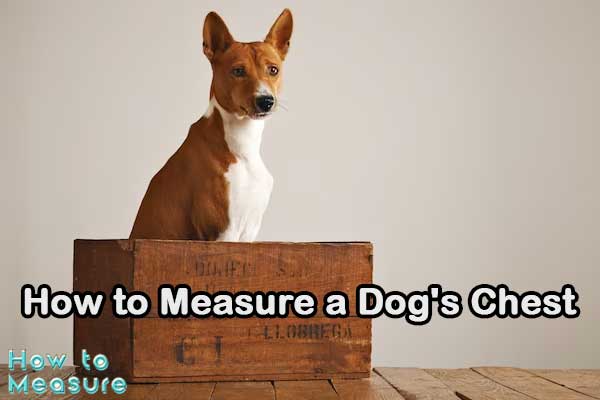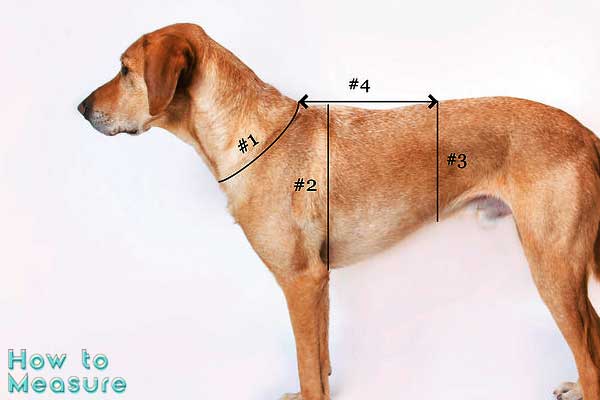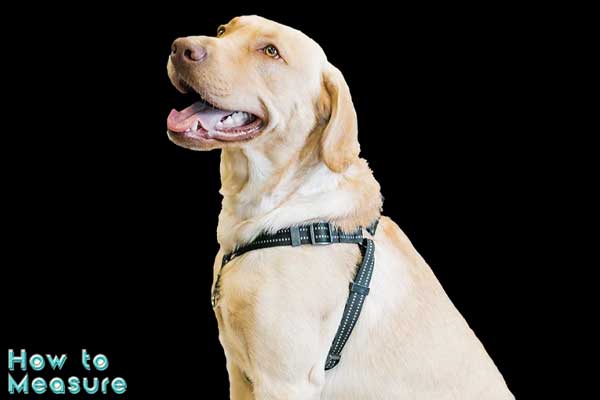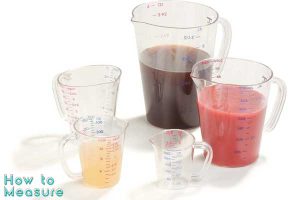When it comes to ensuring the well-being and comfort of our furry companions, proper fitting of their accessories is essential. One crucial measurement to determine the right size is a dog’s chest. Measuring a dog’s chest accurately enables pet owners to choose the appropriate size of harnesses, clothing, and other accessories, ensuring a comfortable and secure fit for their beloved pets. This guide on How to Measure will walk you through the step-by-step process of measuring a dog’s chest, providing valuable insights and tips.
Understanding the Importance of Measuring a Dog’s Chest
Measuring a dog’s chest is crucial to understanding and assessing its overall health, well-being, and physical condition. The chest measurement provides valuable information about a dog’s size, body structure, and potential health issues. Whether you are a dog owner, veterinarian, or animal enthusiast, comprehending the importance of measuring a dog’s chest can greatly benefit the canine’s quality of life.
- Accurate Sizing for Proper Fit: One of the primary reasons for measuring a dog’s chest is to ensure proper sizing of various accessories such as harnesses, collars, and clothing. Ill-fitting gear can cause discomfort, restrict movement, and even lead to injury. By accurately measuring the dog’s chest, you can select appropriately sized items, allowing the dog to move comfortably and preventing potential issues.
- Identification of Ideal Weight Range: Measuring a dog’s chest circumference can offer valuable insights into its weight range. Excessive weight gain can harm a dog’s health, leading to various issues like joint problems, heart disease, and reduced mobility. By regularly measuring the chest, you can monitor any significant changes and take appropriate action, such as adjusting the dog’s diet or exercise routine, to maintain a healthy weight.
- Detection of Muscle Development: Chest measurements can help assess a dog’s muscle development and overall physical condition. A well-toned chest indicates proper muscle growth and strength, while a disproportionately small or weak chest may signal underlying health concerns or lack of exercise. Consistent chest measurements can track changes in muscle mass, allowing you to adjust the dog’s exercise regimen accordingly.
- Early Identification of Health Problems: A dog’s chest size changes may indicate potential health issues. For example, sudden swelling or abnormal chest growth can be early signs of tumors, infections, or other medical conditions. Regularly measuring the chest and monitoring for abnormalities can aid in the early detection of health problems, enabling prompt veterinary intervention and increasing the chances of successful treatment.
- Breed-Specific Considerations: Different dog breeds exhibit variations in body structure and chest dimensions. Measuring a dog’s chest can help determine breed standards, especially for purebred dogs. It allows breeders and dog show enthusiasts to assess whether a dog meets the criteria for confirmation competitions, breeding programs, or specific working roles.
- Tracking Growth and Development: Puppies undergo rapid growth and development during their early months. By measuring their chest regularly, you can track their growth progress and ensure they are developing healthily. This information assists in adjusting feeding amounts, identifying potential issues like malnutrition or obesity, and providing appropriate care for the puppy’s changing needs.
Understanding the importance of measuring a dog’s chest is vital for various reasons. It aids in selecting the right-sized gear, monitoring weight and muscle development, identifying health problems early on, considering breed-specific characteristics, and tracking growth in puppies. Regularly measuring a dog’s chest demonstrates a commitment to their well-being, allowing you to provide the best possible care and enhance their overall quality of life.
Gathering the Necessary Tools
When measuring a dog’s chest, it is essential to gather the necessary tools to ensure accuracy and ease of measurement. Here are some tools you will need:
- Measuring Tape: A flexible measuring tape is your primary tool. It should be long enough to wrap around the dog’s chest comfortably. Opt for a tape with clear markings in both inches and centimeters to suit your preference.
- Assistance: It’s helpful to have someone assist you during the measurement process, especially if your dog is active or unaccustomed to standing still for measurements. An extra pair of hands can help keep the dog calm and ensure the measurements are taken accurately.
- Treats and Rewards: It’s always a good idea to have some treats or rewards handy during the measuring process. Positive reinforcement can help keep your dog calm and cooperative, making the experience more pleasant for both of you.
- Pen and Paper: To jot down the measurements, keep a pen and paper nearby. This will help you keep track of the measurements over time, especially if you’re monitoring your dog’s growth or health progress.
Once you have gathered these tools, you are ready to measure your dog’s chest accurately and effectively. Remember to choose a time when your dog is relaxed and in a calm state of mind to ensure the most accurate measurement possible.
Preparing Your Dog for Measurement
Preparing your dog for a chest measurement is crucial to ensure a smooth and stress-free experience for you and your furry friend. Taking a few steps to prepare your dog beforehand can help them feel more comfortable and cooperative during the measurement process. Here are some tips on preparing your dog for a chest measurement:
- Create a Calm Environment: Find a quiet and familiar area where you and your dog can focus without distractions. Minimize noise, such as turning off the television or radio, to create a calm atmosphere. This will help reduce anxiety and make the measurement process easier.
- Introduce the Measuring Tape: Let your dog become familiar with the measuring tape before you begin the actual measurement. Gently introduce the tape by allowing your dog to sniff and investigate it. This will help them associate the measuring tape with a non-threatening object.
- Encourage Positive Associations: Use treats and positive reinforcement to associate the measuring process with something enjoyable for your dog. Give them treats or praise whenever they show curiosity or calm behavior around the measuring tape. This will help create a positive association and make the measuring process more pleasant for them.
- Practice Handling: Gradually accustom your dog to being handled in the chest area. Start with gentle touches and gradually increase the pressure to mimic the sensation of the measuring tape. Reward your dog for remaining calm and cooperative during the practice sessions. This will help them feel more at ease when the measurement occurs.
- Familiarize with Commands: Teach your dog basic commands such as “sit” or “stay.” Control over their movements will make positioning them correctly during the measurement easier. Practice these commands beforehand so your dog is familiar with them and can follow them easily when needed.
- Maintain a Relaxed Demeanor: Dogs are highly perceptive to their owner’s emotions. Ensure that you remain calm and relaxed throughout the measurement process. Your composure will help your dog feel more at ease and reduce anxiety.
By preparing your dog for a chest measurement in this manner, you can help create a positive and cooperative environment. This will make the measuring process smoother and more accurate, enabling you to obtain the necessary measurements with minimal stress for you and your dog.
Measuring the Chest Girth
Measuring the chest circumference of a dog is a straightforward process that provides valuable information about its size and body structure. The chest girth measurement is taken around the widest part of the dog’s chest, just behind its front legs. Here’s a step-by-step guide on how to measure a dog’s chest circumference accurately:
- Position your Dog: Ensure that your dog is standing in a relaxed and natural position. They must stand squarely on all four legs without slouching or stretching.
- Find the Widest Point: Locate the widest part of your dog’s chest. This is typically just behind the front legs, where the chest bulges the most. It’s crucial to measure at this point to get an accurate chest girth measurement.
- Measure with the Tape: Take the measuring tape and gently wrap it around your dog’s chest at the widest point you identified. Make sure the tape is snug but not too tight. You want it firm against the body without compressing the fur or skin.
- Keep the Tape Level: Ensure the measuring tape remains level around the chest. It should be parallel to the ground and not slanted or angled. This will help you get an accurate and consistent measurement.
- Read the Measurement: Once the tape is securely wrapped around the chest, take note of the measurement where the end of the tape meets the rest of it. Read the measurement in inches or centimeters, depending on the markings on your measuring tape.
- Repeat for Accuracy: Measuring the chest circumference two or three times is a good idea to ensure accuracy. This will help confirm that you’ve obtained a consistent measurement. If there are any discrepancies, take an average of the measurements to obtain the most accurate chest girth.
- Record the Measurement: Note the chest girth measurement in a designated record or a notebook. This is particularly important if you’re monitoring your dog’s growth or need the measurements for sizing purposes.
Following these steps can effectively measure your dog’s chest circumference. Remember to be patient and gentle during the process to keep your dog calm and cooperative. Measuring the chest girth provides valuable information for selecting appropriately sized accessories and monitoring your dog’s health and development.
Taking Additional Measurements
In addition to measuring the chest circumference, you can take a few other measurements to gather more comprehensive information about your dog’s body structure and size. These additional measurements can be helpful when selecting specific gear or assessing your dog’s overall physical condition. Here are some additional measurements you can take:
- Neck Circumference: Measuring the neck circumference provides valuable information for selecting collars, especially if your dog has a thick neck or if you’re considering a training collar or martingale collar. To measure the neck circumference, wrap the measuring tape around the base of the neck where the collar would typically sit. Ensure the tape is snug but not tight, and record the measurement in inches or centimeters.
- Back Length: Measuring the back length helps determine your dog’s appropriate length for jackets, coats, or other clothing items. Start from the base of the neck and measure along the spine to the base of the tail. Make sure the dog is standing straight, and avoid stretching the tape. Record the measurement in inches or centimeters.
- Body Length: The body length measurement provides information about the overall length of your dog’s body, excluding the head and tail. This measurement is useful for determining the proper fit of harnesses or assessing your dog’s body proportions. Measure from the neck to the tail’s base, following the spine curve. Record the measurement in inches or centimeters.
- Height at the Withers: The height at the withers is the measurement from the highest point of the shoulder blades (withers) to the ground. This measurement often determines the dog’s size category, such as small, medium, or large. Use the measuring tape to measure from the withers straight down to the ground while your dog stands on a flat surface. Record the measurement in inches or centimeters.
These additional measurements allow you to gather more comprehensive information about your dog’s body structure, size, and proportions. This knowledge will assist you in selecting the right-sized gear, such as collars, clothing, or harnesses, and provide a better understanding of your dog’s physical condition. Remember to record all the measurements for future reference, especially if you need to regularly monitor changes in your dog’s size or body structure.
Choosing the Right Size Accessories
Choosing the right size accessories for your dog is essential for their comfort, safety, and overall well-being. Once you have measured your dog’s chest accurately, you can use that measurement as a guide to select appropriately sized accessories. Here are some tips to help you choose the right size accessories based on your dog’s chest measurement:
- Harnesses: When selecting a harness, refer to the manufacturer’s size guide or measurement recommendations. Most harnesses have adjustable straps, so you must choose a size that matches your dog’s chest circumference within the adjustable range. Avoid harnesses that are too tight or loose, as they can cause discomfort or compromise the effectiveness of the harness.
- Collars: Collars should fit comfortably around your dog’s neck, with enough room to fit two fingers between the collar and the neck. Consider both the neck circumference and chest girth measurements when choosing a collar. Some breeds may require wider or thicker collars for better support, especially if they pull during walks.
- Clothing: If you’re purchasing clothing items such as coats or sweaters, refer to the manufacturer’s size chart and compare your dog’s chest measurement with the recommended sizes. Pay attention to both the chest girth and back length measurements. Choosing clothing that provides enough room for your dog to move comfortably without being too tight or restrictive is important.
- Life Jackets: For water activities or boating, if you’re considering a life jacket for your dog, follow the manufacturer’s size guidelines and look for jackets with adjustable straps for a secure fit. Ensure the chest measurement matches the recommended size for proper buoyancy and safety.
- Martingale or Choke Collars: If you’re using a martingale or choke collar for training purposes, select a size that fits comfortably around your dog’s neck when relaxed but tightens appropriately when tension is applied. Proper fit and adjustment are crucial for the safe and effective use of these types of collars.
- Muzzles: If you need a muzzle for your dog, choose a size that allows your dog to pant and drink water comfortably. Refer to the manufacturer’s size guide and consider the muzzle’s circumference and the snout’s length. A well-fitting muzzle should not be too tight or too loose.
Always refer to specific size charts or guidelines provided by the manufacturer when choosing accessories for your dog. Different brands may have slightly different sizing recommendations, so it’s imfollowingidelines specific to your purchasing brand. When it is important to doubt, please consult a professional, such as a veterinarian or a knowledgeable pet store associate, who can guide you on selecting the right size accessories for your dog based on their chest measurement and specific needs.
Tips for Accurate and Consistent Measurements
Accurate and consistent measurements are crucial when measuring a dog’s chest to ensure the right fit for accessories and to track any changes over time. Here are some tips to help you obtain precise and consistent measurements:
- Use a Flexible Measuring Tape: Invest in a flexible measuring tape specifically designed for measuring dogs. These tapes are easier to handle, and their flexibility allows more accurate measurements of your dog’s chest contours.
- Measure When Your Dog is Relaxed: Choose when your dog is relaxed and calm. This will make the measuring process easier and more comfortable for them. Avoid measuring right after activities or when your dog is excited or anxious, as it may affect their posture and result in inaccurate measurements.
- Keep the Measuring Tape Snug but Not Tight: The measuring tape should be snug around your dog’s chest but not too tight. Ensure it fits securely against their fur without compressing it or causing discomfort. A properly fitted tape will provide an accurate measurement.
- Take Multiple Measurements: Take multiple measurements of your dog’s chest circumference for increased accuracy. Repeat the process two or three times, and if there are any discrepancies, take an average of the measurements. This helps eliminate any measurement errors and provides a more reliable result.
- Measure at the Widest Part of the Chest: The chest girth measurement should be taken at the widest part of your dog’s chest, just behind its front legs. This is typically where the chest bulges the most. Measuring at this point ensures that you capture the fullest part of their chest and obtain an accurate measurement.
- Keep the Measuring Tape Level and Parallel: Maintain a level and parallel position of the measuring tape around your dog’s chest. It should be at the same height all the way around, and the tape should be parallel to the ground. This helps prevent any skewing or slanting of the measurement, ensuring consistency.
- Record the Measurements: After each measurement, record the chest girth measurement and the date. Keeping a record will allow you to track changes in your dog’s size over time and provide a reference for selecting appropriately sized accessories.
By following these tips, you can ensure accurate and consistent measurements of your dog’s chest. This will help you select the right-sized accessories and monitor any changes in your dog’s size or health more effectively. Remember to be patient and gentle throughout the process to keep your dog comfortable and cooperative.
Common Mistakes to Avoid in Measuring a Dog’s Chest
When measuring a dog’s chest, it’s important to be aware of common mistakes that can lead to inaccurate measurements. Avoiding these mistakes will help you obtain precise and reliable measurements for selecting the right-sized accessories and tracking any changes in your dog’s size. Here are some common mistakes to avoid when measuring a dog’s chest:
- Measuring Over Thick Fur: If your dog has long or thick fur, it’s essential to part the fur and measure directly against the skin. Measuring over the fur can result in an inaccurate measurement, as the fur adds extra bulk. Ensure the measuring tape is in direct contact with the dog’s skin for accurate results.
- Measuring Too Loose or Too Tight: It’s crFindingght the balance between a snug fit and a too-tight measurement. Measu is a crucial ring. Too loosely can lead to inaccurate measurement, while measuring too tightly can cause discomfort to your dog. The measuring tape should be snug against the dog’s chest without compressing the fur or causing any restrictions.
- Not Keeping the Measuring Tape Level: Keeping the measuring tape level is essential to obtain consistent and accurate measurements. Make sure the tape is parallel to the ground and at the same height around the chest. Tilting or angling the tape can result in skewed and inconsistent measurements.
- Measuring the Wrong Part of the Chest: The chest girth measurement should be taken at the widest part of the dog’s chest, just behind the front legs. Avoid measuring too high on the neck or low on the abdomen, as these areas do not represent the chest circumference. Failing to measure at the correct point can lead to inaccurate results.
- Rushing the Measurement: Taking measurements when your dog is anxious, excited, or restless can lead to inaccurate results. Choosing a calm and quiet time when your dog is relaxed is important. Rushing the measurement process may also result in errors or inconsistencies. Take your time and ensure your dog is calm and cooperative.
- Not Recording the Measurements: Failing to record the measurements can make tracking changes in your dog’s size challenging. It’s important to record the measurements and the date they were taken. This will help you monitor your dog’s growth, assess any weight changes, or select appropriately sized accessories in the future.
By avoiding these common mistakes, you can ensure accurate and reliable measurements of your dog’s chest. Taking the time to measure correctly will help you provide your dog with properly fitted accessories and assist in effectively monitoring their size and health during Comfort and Safety for Your Dog.
When measuring a dog’s chest, it’s essential to prioritize their comfort and safety throughout the process. Ensuring a comfortable and safe environment helps create a positive experience for your dog, making the measuring process easier and stress-free. Here are some tips to help you prioritize comfort and safety when measuring your dog’s chest:
- Choose a Calm Environment: Find a quiet and familiar space where your dog feels comfortable. Minimize distractions and noise that could cause anxiety or restlessness. Creating a calm environment will help your dog relax and cooperate during measurement.
- Use Positive Reinforcement: Positive reinforcement techniques, such as treats, praise, or gentle petting, can help keep your dog calm and engaged. Reward them with treats or verbal praise throughout the measuring process, especially when they display cooperative behavior. This positive association helps them feel more comfortable during future measurements.
- Keep the Measuring Tape Snug but Not Tight: Ensure the measuring tape fits snugly against your dog’s chest but is not too tight. It should be secure enough to provide an accurate measurement but should not cause discomfort or restrict their movement. Regularly check that the tape is not digging into their skin or causing distress.
- Monitor Your Dog’s Body Language: Pay close attention to your dog’s body language during the measurement. Signs of stress or discomfort, such as panting, shaking, or attempting to pull away, should be noted. If your dog displays signs of distress, take a break and resume the measurement when they are more relaxed.
- Take Breaks If Needed: Taking breaks as necessary is important if your dog becomes anxious or restless during the measurement. Allow your dog to take a breather, play, or engage in a calming activity before continuing. Pushing through when your dog is uncomfortable can lead to inaccurate measurements and a negative experience for both of you.
- Seek Assistance if Required: If you have a particularly nervous or uncooperative dog, consider seeking assistance from another person. An extra pair of hands can help keep your dog calm and secure during measurement. It also ensures their safety by preventing any sudden movements or accidents.
- Prioritize Safety: Throughout the measurement process, prioritize your dog’s safety. Be mindful of their comfort and any signs of distress. Avoid forcefully pulling or tugging the measuring tape, as it can startle or hurt your dog. If at any point you feel that the measuring process is causing discomfort or distress, stop and consult with a professional, such as a veterinarian or dog trainer, for guidance.
By prioritizing your dog’s comfort and safety, you can create a positive experience when measuring their chest. This ensures accurate measurements and helps build trust, and strengthens your bond with your furry friend. Remember to be patient, observant, and responsive to your dog’s needs.
Conclusion
Accurately measuring your dog’s chest is crucial for selecting the right size harnesses, clothing, and other accessories. Following the step-by-step guide, you can ensure a comfortable and secure fit for your furry friend. Remember to measure regularly, consider additional measurements, and prioritize your dog’s comfort and safety when choosing accessories. With the right measurements and well-fitted accessories, you can enhance your dog’s comfort and make their daily activities more enjoyable.
FAQs
- Q: How often should I measure my dog’s chest? A: Measuring your dog’s chest periodically is recommended, especially during growth stages or when considering new accessories.
- Q: Can I use a regular tape measure instead of a flexible one? A: It’s best to use a flexible measuring tape as it conforms to your dog’s body shape more accurately.
- Q: Should I measure my dog’s chest when sitting or lying down? A: It’s preferable to measure your dog’s chest when they are standing to get the most accurate measurements.
- Q: Can I wash my dog’s harness if it gets dirty? A: Most harnesses are machine washable, but following the manufacturer’s instructions for proper care is important.
- Q: What should I do if my dog’s measurements fall between two sizes? A: In such cases, choosing the larger size is generally recommended for a more comfortable fit. However, referring to the specific brand’s sizing chart can provide further guidance.













